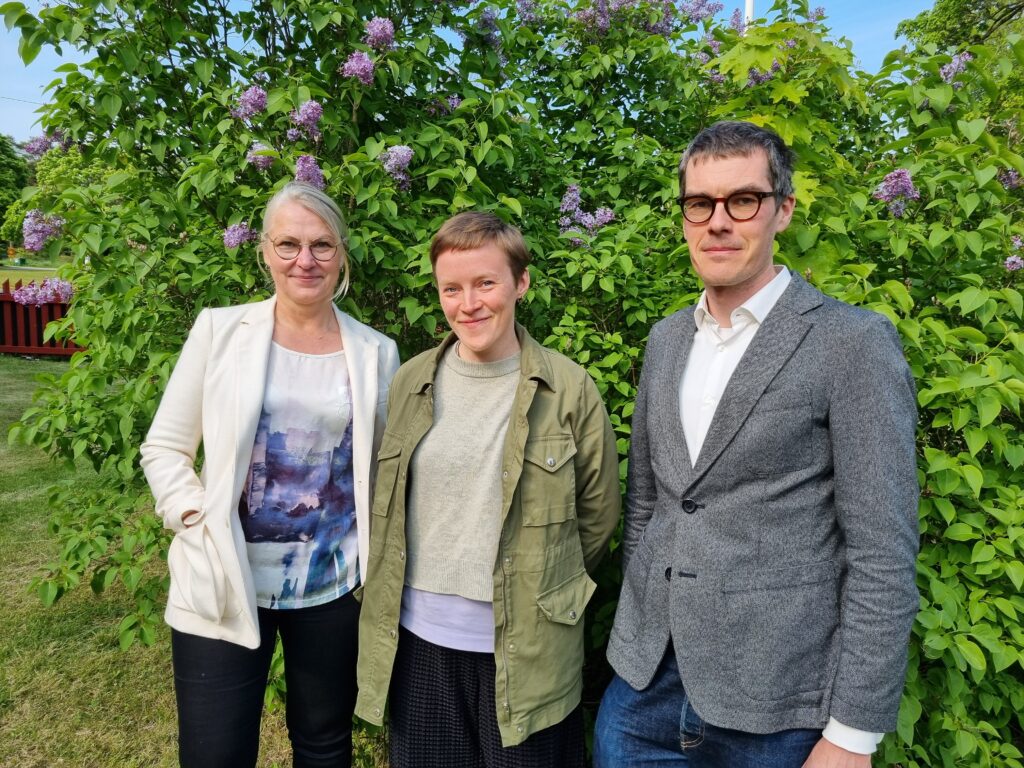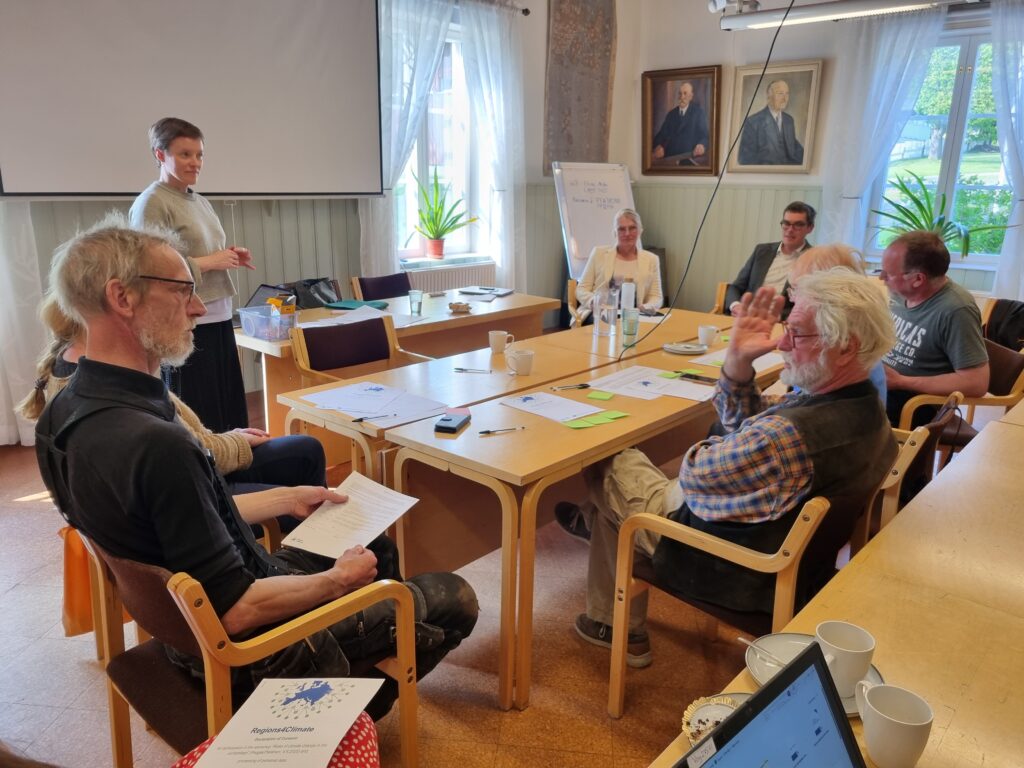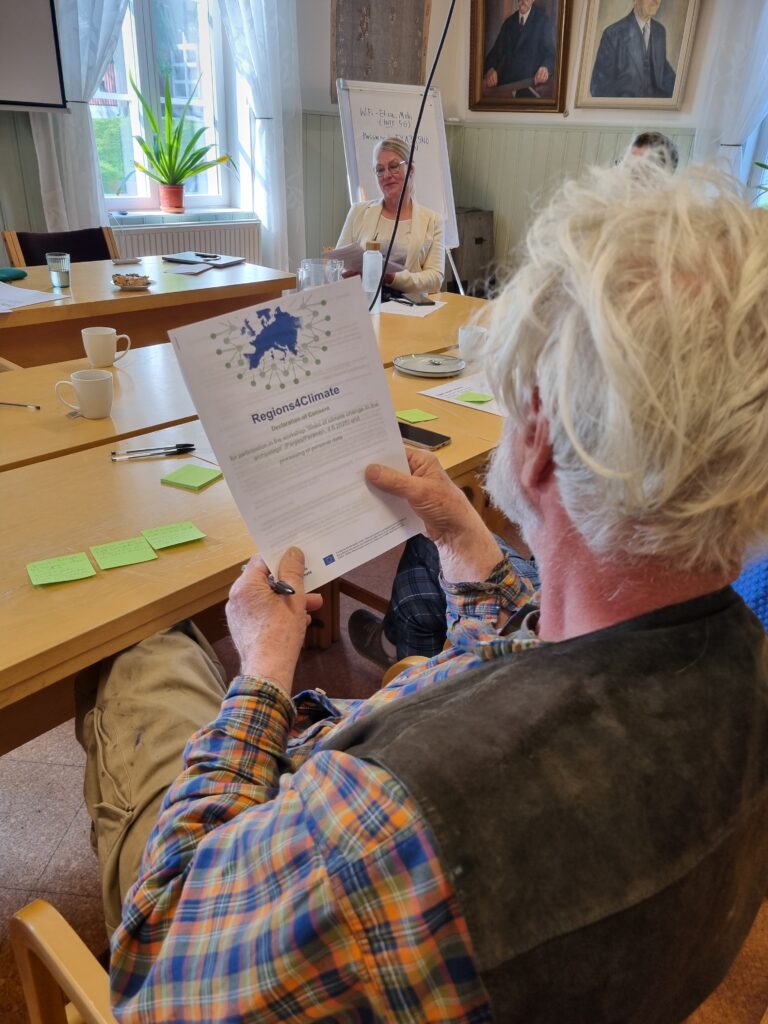In June, locals in Nagu had the opportunity to share how they feel climate change is affecting the archipelago and how they might adapt to changing conditions.
“Climate change is affecting the archipelago too, with milder winters, longer heatwaves, increased rainfall, and rising sea levels. This poses risks to shared infrastructure such as roads, buildings, piers, water supply systems, and many other areas,” says Annastina Sarlin, a resident of Nagu and Cooperation Manager at the Nordic Archipelago Cooperation.
She explains that the organisation is a partner in the EU-funded Regions4Climate project, which aims to strengthen the resilience of European regions to climate change in a socially fair way.
“How does climate change affect different groups of people, and how can we prepare in a just and sustainable way?” asks Sarlin.
To gather insights from the local community, the project organised workshops focused on climate risks in archipelago areas. Six participants attended the workshop at Kommunalstugan, a small group, but representing key sectors: farmers, specialist growers, tourism entrepreneurs, builders, artists, and part-time residents.
While none were climate experts, each participant is an expert in their own environment, and they were encouraged to share their personal experiences.

Climate data, future scenarios, and local observations
Also present at Kommunalstugan were Julia Jousilahti, Lead Expert, and Johannes Klein, Climate Adaptation Researcher, both from the think tank Demos Helsinki. Klein presented expected climate changes affecting the archipelago.
“By 2080, the average temperature in our region is expected to rise by between one and five degrees, and rainfall could increase by between five and fifteen percent. Yet we still know surprisingly little about exactly what will be affected and how,” says Klein.
Temperature increases and higher precipitation are expected to be most significant in winter, while summers could become drier.
“What is the impact if more precipitation falls as rain instead of snow?” wonders Vineta Fellman, a part-time resident in Korpo.
Klein explains that this could increase nutrient runoff into the sea and deteriorate groundwater quality.
“There are also indications that the Baltic Sea’s salinity has decreased due to increased rainfall,” adds Sarlin.
Mats Fagerlund, a tourism entrepreneur and farmer, shared how he has observed weather and wind patterns in the archipelago for fifty years.
“Frost used to arrive as early as August. Now it comes in October, which means you can farm later into the autumn. A small temperature shift changes the climate quite significantly. Farmers in the archipelago are quick to adapt.”
But there are downsides too. Previously, archipelago farmers could harvest new potatoes earlier than inland areas. Now places like Letala are just as early. The lack of frost has also led to more plant diseases.
“There’s a lot to keep up with. We can’t grow every vegetable anymore, for instance, turnips were missing last year. Risks are rising, especially in southern Europe, where drought is even worse.”
Fagerlund called for a Nordic climate strategy for agriculture, addressing both risks and opportunities. He also sees strong potential for tourism in the archipelago but highlights inadequate infrastructure.
“Last summer, tourists came to Tackork from Austria and Switzerland. They usually go to the Mediterranean but headed north because of the heat there. It’s a growing trend.”

Tourism’s water needs and infrastructure challenges
Tourism was also discussed in terms of water consumption and local awareness.
“The problem with tourism is water. There isn’t enough if everyone showers every day,” says Anna Nyreen. Tourists are rarely aware of where the archipelago’s water comes from or how sensitive the resources are. Participants highlighted infrastructure as a particularly vulnerable sector: ferries are underused for much of the year, but capacity might be reduced if extreme weather becomes more frequent. Permafrost damage affects road durability, and power outages could cause issues if ferries become electric and backup systems fail

Social justice, future visions, and community resilience
Participants reflected on the future, one suggestion was to strengthen community life in the archipelago and create vibrant winter activities to brighten the darker months. Others called for more family housing and greater social inclusion.
“The positive side is that climate change is actually attracting more people here. We need to adapt our communities and help newcomers understand the region’s specific conditions,” says Sarlin.
Finally, they discussed the possibility of introducing a tourist tax and launching joint projects to secure the archipelago’s future.
The results of the workshop will be compiled and used as a foundation for regional strategies, including at the municipal level. The event was organised by the Nordic Archipelago Cooperation in collaboration with Demos Helsinki.
